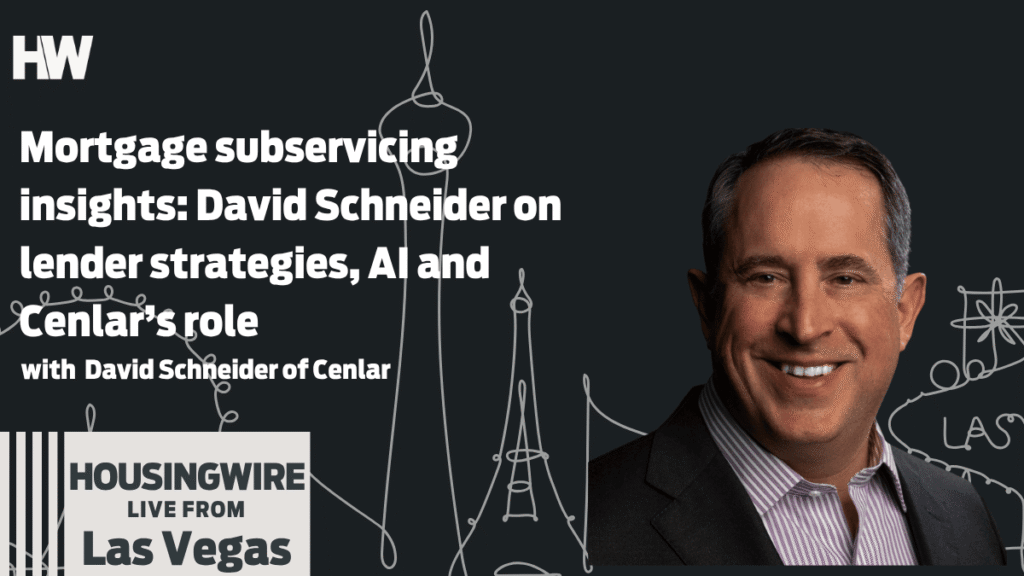Mortgage lenders face new pressures to improve efficiency and customer experience. Diego Sanchez speaks with David Schneider of Cenlar about the evolving subservicing landscape and why selecting the right partner is critical for success. David explains how Cenlar supports lenders, the advantages of subservicing, and key criteria for maintaining strong partnerships.
This conversation also delves into how AI and technology investments are changing servicing operations, how to navigate challenges with current partners and the opportunities ahead for lenders embracing modern subservicing solutions.
“Cenlar is a subservicer. We service loans for MSR owners who find that we provide greater value than they can do on their own,” Schneider said. “A lot of people own MSR and say, ‘I don’t have the infrastructure, the scale, the people, the technology,’ and we provide that. We stand in the back for our clients as their back office and enable them to own MSR and serve their customers.”
Asked why a lender should work with a subservicer, Schneider said, “It’s a scale business. We service 2 million loans, and we’re still not sure we have the right scale at that level. Scale means we invest in technology and people. We’re building out our AI lab and partnerships — that’s hard to do when you only have 20,000 or 100,000 loans.”
On whether lenders should even retain servicing in today’s environment, he said, “It depends on capital structure and how you want to run your business. MSR is capital intensive. Some originators sell all MSR. Others want a more balanced model — control the customer, re-solicit for refinance, and have cash flows when rates are higher and originations are slower.”
“Once you have that customer, if they have a great experience with us as the subservicer, that customer is more likely to go back to our clients. We do most of our servicing on a private-label basis — it’s in the name of our client.”
Schneider offered a three-part test for lenders trying to decide on a subservicer. “First, size and scale — not for its own sake, but because it funds the technology investments, including AI and core platforms, and lets us spread costs and lower price. Second, what kind of company are you? We’re a federally regulated bank, supervised by the OCC, with a very high bar for risk and compliance—there are thousands of rules, every day. Third, who are the people? We’re mortgage bankers first and subservicing partners second. We understand our clients’ goals and help them achieve them.”
What excites him about servicing? “The size and scale of the platform. We have customers calling every day. It’s fun to bring technology to improve the customer experience — get more customers on digital and help them get more out of the relationship.” He pointed to client-led innovation. “One great product we’re working with is UWM’s relationship with Bilt — rewards for making your mortgage payment. Those kinds of innovations with our clients are pretty interesting.”
On recapture, he says timing is everything. “Nobody wakes up and says, ‘Great day to get a loan.’ You want to be there at that exact time when they start thinking about it — and make it known they have an opportunity. You’d be surprised how many don’t follow markets and don’t know they could save. We help with advanced analytics so when they’re ready, our clients can act.”
As for rates and readiness: “I have no idea where rates are going. Great mortgage bankers have three books on the table — rates same, up, down and a plan for each. Be ahead of the curve. We’ll help when it’s a refi market, and when it’s not, we’ll help streamline costs and manage cash.”

